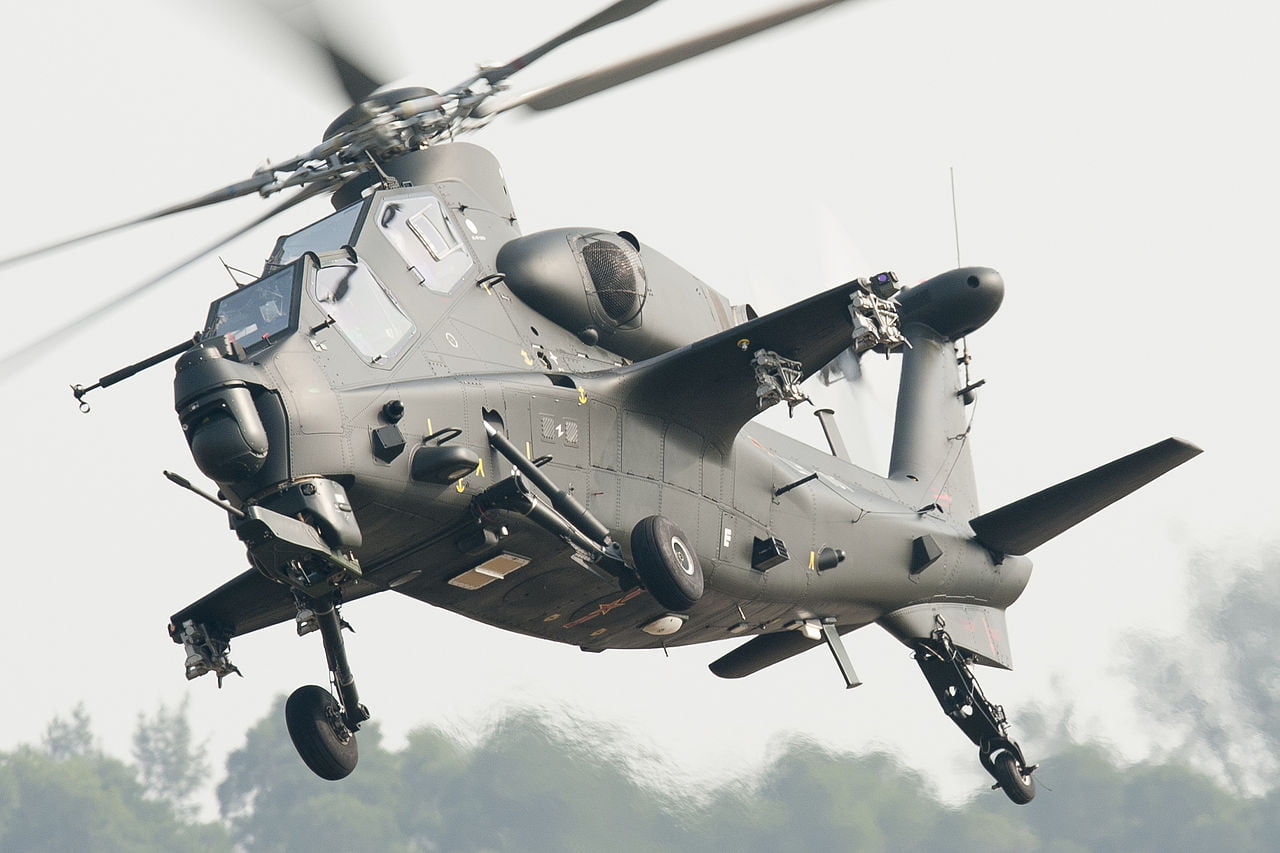According to the Chinese state-run media, a military aviation brigade belonging to the People’s Liberation Army (PLA) Xinjiang Military Command recently participated in a live fire drill with special forces and medical units in the Karakoram Mountains at a height of 5,200 metres.
The involvement of Z-10 attack helicopters in this live fire practise was noteworthy because it was supposedly their first time. Only transport helicopters were used in the past to transport border defence personnel on patrol missions.
Chinese military experts claim that the addition of attack helicopters to patrol missions will better protect China’s national sovereignty and territorial integrity by providing air support to the PLA ground forces stationed on its borders.
The long-running border dispute between China and India entered its third year in May 2022 and has since continued despite multiple high-level discussions between top officials.
A few days prior to the key border discussions, experts speculate that China may have deployed Z-10 attack helicopters in the high-altitude Karakoram Mountains as a well-timed show of power.
Z-10 Attack Helicopter
The Z-10 attack helicopter was created by the Changhe Aircraft Industries Group (CHAIG) and China Helicopter Research and Development Institute (CHRDI). It has limited air-to-air combat capabilities and can perform anti-armor and combat interdiction operations.
The helicopter is capable of transporting a variety of air-to-air missiles (AAMs), including the TY-90, PL-5, PL-7, and PL-9 AAMs, as well as anti-tank guided missiles (ATGMs) HJ-9/9A and HJ-10.
Additionally, the 14.5mm heavy machine gun is carried by the Z-10s. Their chin-mounted turret can be equipped with either a 20mm or 30mm autocannon.
The Z-10 also features four multi-barrel unguided rocket pods that can launch a variety of rockets varying in size from 20 mm to 130 mm under the sub wings.
The locally produced WZ-9 engine, which experts believe is inadequate for the 5.5-ton helicopter, has led to the Z-10s’ reputation as being operationally inappropriate for high-altitude operations.
Because of this, Chinese specialists laud their most recent participation in border patrols in the Karakoram Mountains as evidence that the engine is capable of carrying out missions at a high altitude.
According to a military aviation specialist in Beijing quoted by Global Times, “the Z-10 attack helicopter’s routine use in high-altitude border patrols shows that its engine is powerful enough to deal with the thin air.
The WZ-16 engine, which was reportedly being developed with assistance from French helicopter engine manufacturer Turbomeca – later known as “Safran Helicopter Engines” – to realise the high-altitude capability in Z-10s, could have also been installed in the Z-10s used in the most recent border patrols.
The helicopter has a stated operating ceiling of 6,000 metres thanks to its two WZ-9 engines, each of which generates 1350 shaft horsepower.
Z-16 Rivaled By Apaches
The fleet of 28 American-built Apache helicopters, of which 22 are owned by the Indian Air Force (IAF) and six by the Air Wing of the Indian Army, rivals China’s Z-10 helicopters on the Indian side.
For the purpose of disabling the enemy’s armour, these Apache helicopters are equipped with Stinger air-to-air and Hellfire air-to-surface missiles. Additionally, 11 of the 22 Apache helicopters in the IAF are fitted with the Longbow fire control radar system.
The Apaches also feature a 30 mm M230 chain cannon that is positioned below the forward fuselage between the main landing gear and is capable of firing 625 armor-piercing bullets per minute at enemy ground forces and poorly armoured structures.
The Apache has a service ceiling of 6,400 metres and is powered by two General Electric T700 GE 701C turboshaft engines that each produce 1,890 horsepower. In addition, Hindustan Aeronautics Limited has received an order from India for 15 Light Combat Helicopters (LCH) (HAL).
The 5.5-ton LCH has an operational ceiling of 6,500 metres thanks to its two Shakti Engines. The French MBDA Mistral air-to-air missiles, the Helina air-to-ground missiles, and the NAG anti-tank missiles, which are the airborne variants, can all be carried on board. It can also carry a 20 mm gun and 70 mm rockets.
In addition to Apache helicopters, the Indian Army also has about 75 Advanced Light Helicopters (ALH) Rudra, an armed variant of the HAL-made Dhruv utility helicopter.
China, in contrast, has a large number of Z-10 helicopters as well as Z-19 reconnaissance helicopters with limited assault capability.
Lt. Col. JS Sodhi noted that China has an aviation brigade with each of its Corps and asserted that China has a significant advantage over India in terms of attack helicopters.
An crucial component of the mechanised battlefield are attack helicopters. As advancing armoured columns are “particularly susceptible to aerial attacks since the top of any tank has the least armour protection relative to its sides,” Sodhi claims that they are primarily used in armoured warfare to offer cover.
